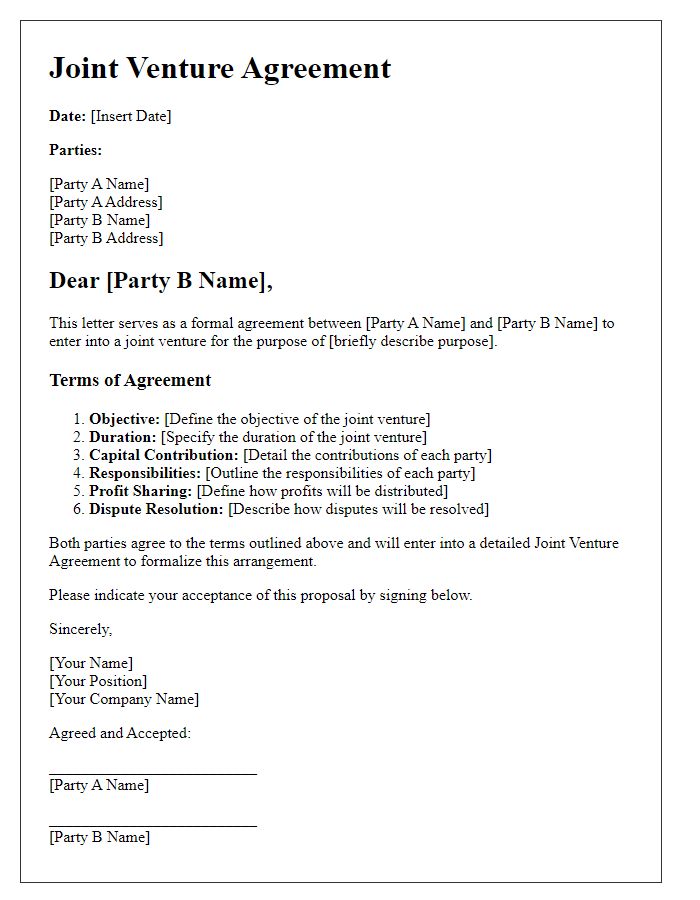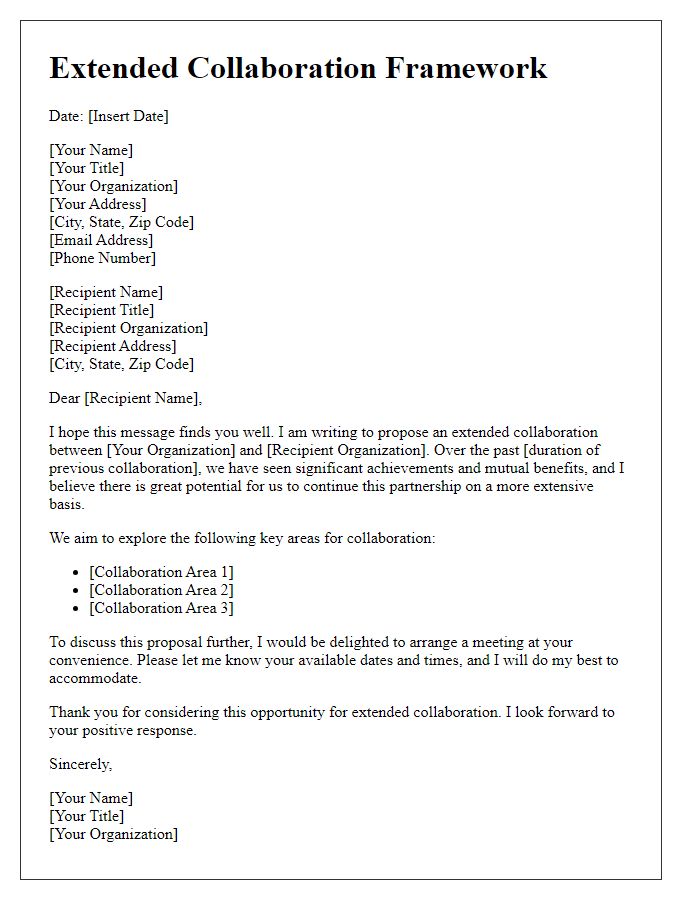Are you considering a long-term collaboration agreement and unsure where to start? Crafting the right letter is essential to establish a solid foundation for your partnership. In this article, we'll walk you through the key elements to include, ensuring clarity and mutual understanding from the very beginning. Ready to dive in and take the first step towards a successful collaboration?

Introduction and Purpose
The introduction of a long-term collaboration agreement establishes the foundational framework for a mutual partnership aimed at achieving shared objectives. This agreement outlines the goals, responsibilities, and expectations between the involved entities, often defined by formal names such as organizations, companies, or institutions. The purpose is to foster a collaborative environment that promotes sustained interaction and resource sharing. Such agreements often specify duration, commitment levels, and key performance indicators (KPIs) that guide the relationship, enhancing accountability. Furthermore, they may include clauses addressing conflict resolution and amendment procedures, ensuring adaptability to changing circumstances over time.
Scope of Collaboration
The scope of collaboration includes the establishment of a comprehensive partnership between Company A and Company B, focusing on sustainable practices and innovation in technology development. Key objectives encompass joint research initiatives aimed at enhancing renewable energy solutions, specifically solar panel efficiency improvements by 20% within the next three years. Collaborative efforts will also extend to co-hosting workshops and seminars in various locations, such as San Francisco and Berlin, to promote knowledge sharing and skill development among staff. Regular biannual meetings will serve as checkpoints to assess progress and adjust strategies, ensuring alignment with evolving industry standards and regulatory compliance. A commitment to transparency will underpin all communication, establishing a robust framework for the successful execution of shared goals.
Roles and Responsibilities
In a long-term collaboration agreement, clearly defined roles and responsibilities enhance the effectiveness of partnership efforts. The project manager oversees coordination, ensuring alignment with objectives and timelines, while team members provide specialized skills across various phases, from planning to execution. Responsibilities may include stakeholder communication, resource management, and regular progress reporting, with specific tasks outlined to reflect the expertise of each participant. For instance, a financial analyst might manage budgeting and cost control, while a marketing lead focuses on promoting the initiatives. This structured approach helps mitigate risks and fosters accountability, ultimately driving successful outcomes in collaborative projects.
Confidentiality and Data Protection
The long-term collaboration agreement emphasizes confidentiality and data protection, ensuring that sensitive information remains secure between parties, such as companies. Key elements include defining confidential information (financial data, business strategies, intellectual property), outlining obligations to protect such data (encryption standards, access restrictions), and specifying the duration of confidentiality obligations (typically ranging from two to five years post-collaboration). Detail the procedure for data breaches, including immediate notification and remediation steps, while highlighting compliance with relevant regulations, such as the General Data Protection Regulation (GDPR) in the European Union or the California Consumer Privacy Act (CCPA) in the United States. Additionally, it is crucial to address dispute resolution mechanisms, providing clarity in case of violations of confidentiality agreements. This structured approach fosters trust and transparency in the collaborative environment.
Duration and Termination
A long-term collaboration agreement outlines a partnership's duration and the conditions for its termination. Typically, the duration can range from one year to five years, with specific start and end dates clearly defined. Termination provisions often include mutual consent, breach of contract (referring to violations of the agreement), or unforeseen circumstances (such as natural disasters or legal changes). Additionally, clauses may address notice periods (usually 30 to 90 days) required prior to ending the collaboration, ensuring both parties have adequate time to prepare for the conclusion. A well-defined duration and termination section helps mitigate risks and fosters a clear understanding between the collaborating entities.













Comments